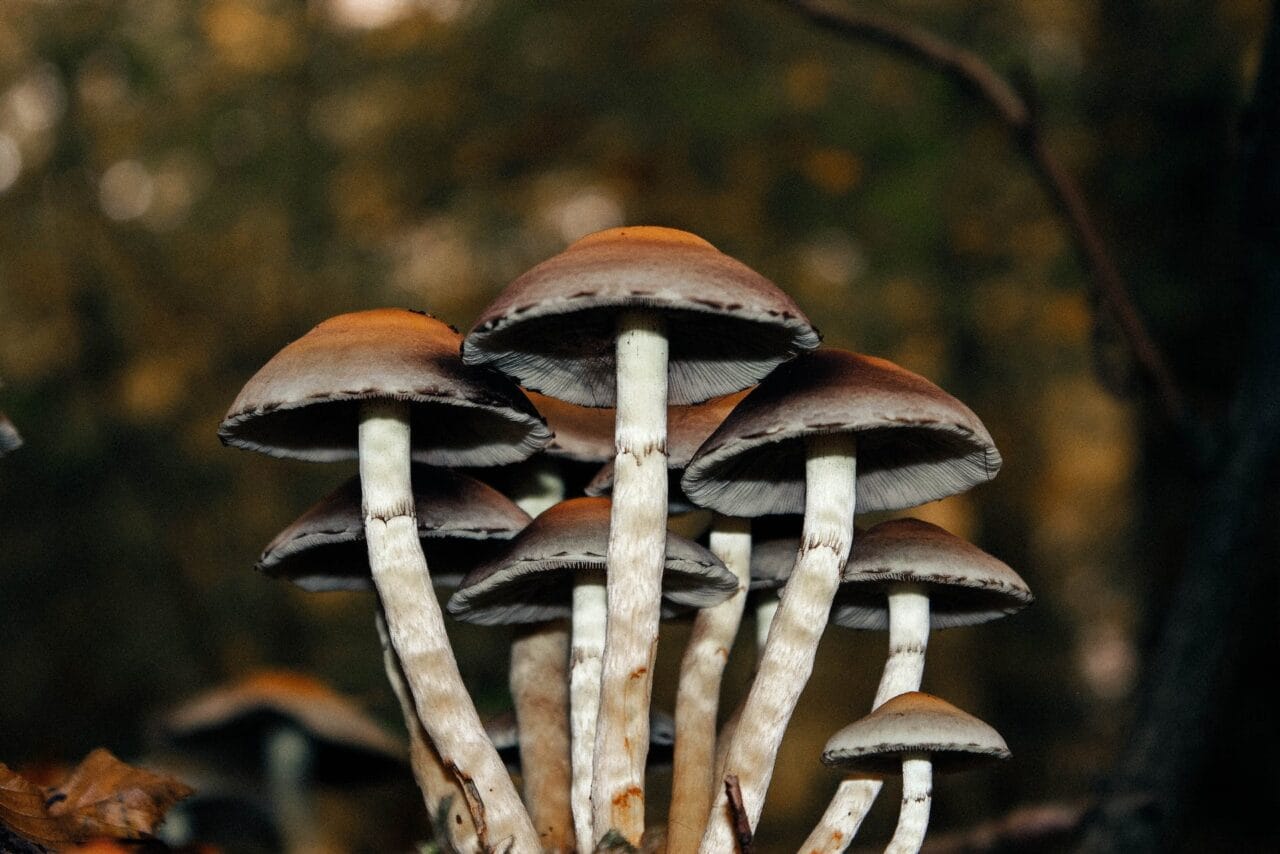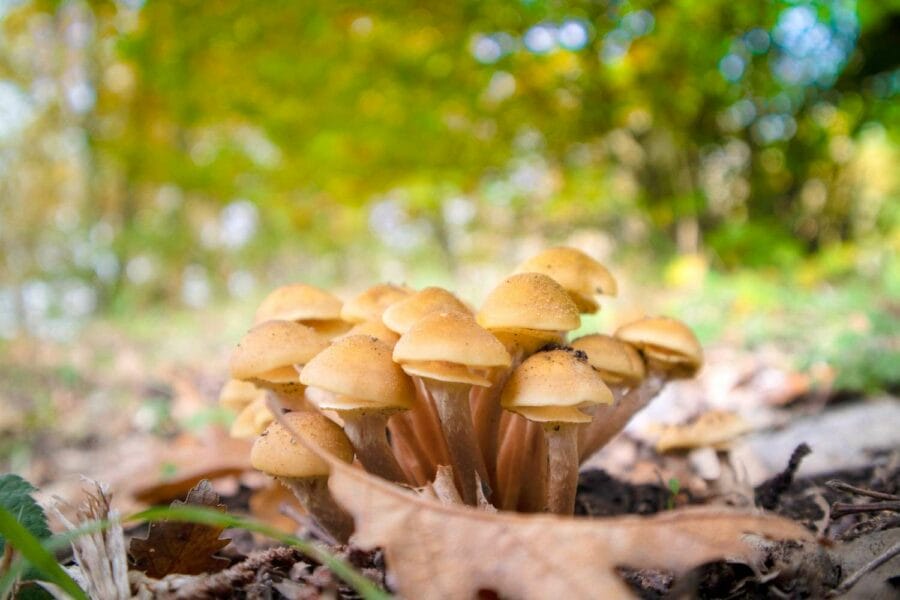Psilocybin, a psychoactive compound present in magic mushrooms, is commonly used for recreational purposes to elicit euphoria and hallucinations.
Aside from its mind-altering effects, research has been conducted into the potential benefits of this compound for chronic pain relief.
This article delves into a case study that investigates the potential of microdosing mushrooms in alleviating chronic pain.
Key Takeaways:
- Microdosing mushrooms may provide both immediate and sustained pain relief.
- Psilocybin microdosing, when administered in small quantities, generally has fewer side effects compared to traditional pain medications.
- Psilocybin works with the serotonin 2A (5-HT2A) receptors to alleviate pain, among other conditions.

The Study
Dr. Matthew Lyes and his team from the Division of Pain Medicine in the Department of Anesthesiology at the University of California, San Diego, conducted a study titled “Microdosing Psilocybin for Chronic Pain: A Case Series“. The research focused on three patients who used small doses of psilocybin to manage their chronic pain symptoms.
Three Case Studies, One Result – Chronic Pain Relief
Patient # 1
| AGE/ SEX: | 37 Male |
| PAIN TYPE: | Neuropathic pain occurring below a spinal cord injury site. |
| PAIN INTENSITY: | Starts at 4 to 5/ 10, rising to 8/ 10 later in the day |
| PSILOCYBIN DOSE: | 250 mg of ground mushroom for less than 6 months |
| OUTCOME: | Discontinuation of prescribed pain medication, decrease in muscle spasms, and improved bowel movement efficiency. No signs of rebound pain or withdrawal symptoms were observed. |
| The patient reported that while his regular medications merely subdued the pain, psilocybin effectively eliminated it, reducing his average pain level from 5 to | |
Case Study: Second Patient
| AGE/GENDER: | 69-year-old Female |
| PAIN TYPE: | Complex Regional Pain Syndrome (CRPS) |
| PAIN INTENSITY: | Pain level varies from 5 to 7 out of 10, increasing with activity and during pain flare-ups |
| PSILOCYBIN DOSAGE: | 500 mg daily for 7 to 10 days with 2 to 3 days rest periods over a year. Dosage rises to 750 mg to 1 gram during pain flare-ups |
| EFFECT: | Pain lessens by 80% for 3-4 hours, slowly reverting to original levels after 12 hours. Complete pain alleviation (90%-100%) persists for 6-8 hours, reverting to original levels after 18 hours. |
| The patient notes a loss of appetite without nausea. Disorientation or unsteadiness in walking is observed when the dosage is increased (750 to 1000mg). | |
Case Study: Third Patient
| AGE/GENDER: | 40-year-old Female |
| PAIN TYPE: | Lumbar Radiculopathy and Neuropathic Pain |
| PAIN INTENSITY: | A regular 8 out of 10, rising to maximum during physical activity |
| PSILOCYBIN DOSAGE: | Every two months, a dosage of 1000 mg from a mushroom chocolate bar. |
| EFFECT: | Significant pain relief without any psychoactive effects. Improved flexibility and functionality observed. Pain gradually returns to initial levels over 2-4 weeks. Regular dosage improves pain control. |
| The patient doesn’t report any significant physical, cognitive, or behavioural side effects. Her mood remains stable. She maintains her standard SSRI dosing for depression management during the psilocybin treatment period. | |
Comprehending Pain Management using Psilocybin
Constant bodily and visceral pain signals strengthen certain neural pathways due to peripheral and central sensitization, causing chronic physical and emotional pain. Psychedelics like psilocybin stimulate 5-HT2A receptors, potentially resetting brain areas associated with neuropathic conditions.
A patient reported prolonged pain relief lasting for several weeks. This suggests that direct stimulation of the 5-HT2A receptors can result in a central regulation of pain perception and
This is due to an enhancement in synaptic adaptability.
Potential Adverse Effects of Psilocybin versus Traditional Pain Relievers
| PSILOCYBIN (As per Research) | TRADITIONAL PAIN RELIEVERS |
| Muscle spasms | Nausea |
| Decreased appetite | Stomach discomfort |
| Confusion | Migraines |
| Unsteady gait | Dependency |
| No mood changes | Drowsiness |
Potential Areas for Future Psilocybin Research
Upon assessing the experiences of three subjects, the research team has identified certain potential areas for future scrutiny due to their prospective benefits.
- Small psilocybin doses may provide immediate and possibly persistent neuropathic pain relief, without leading to physical tolerance or dependency.
- Explore the impact of different treatment modalities when used in conjunction with psilocybin. For example, patient # 3 reported an increased analgesic effect when psilocybin was used in combination with physical therapy.
- Even without psychotherapy, small psilocybin doses may offer pain relief, as the case study indicates. The researchers suggest that incorporating therapeutic guidance could potentially enhance or extend the therapeutic outcomes.
Study Limitations
Despite the encouraging results seen in the subjects, it’s crucial to acknowledge the limitations identified in the study.
- The small sample size may not accurately represent all individuals afflicted with neuropathic pain.
- The study did not include any participants who did not respond to psilocybin.
- No evaluations were conducted before and after treatment to measure the effect of psilocybin on psychiatric disorders such as depression and anxiety.
- Most of the data was self-reported by the participants.
- The presence of the interviewer and potential bias towards psilocybin could have influenced the participants’ responses.
- The study did not investigate the potential of the placebo effect.
- The study did not ascertain the quantity of psilocybin in each mushroom.
Microdosing Psilocybin Mushrooms
In the study, patients #1 and #2 consumed a microdose of psilocybin in a powdered form extracted from dried mushrooms. Patient #3, on the other hand, combined it with chocolate. There are many psilocybin microdosing products available, and we have curated a list of some of them below.
Dried Psilocybin Mushrooms
While the study did not mention the specific strain used, the following strain is recommended for those starting out.
- Golden Teacher: A highly popular and widely distributed strain of magic mushrooms.
- Amazonian Cubensis: This strain is well-known for its user-friendliness and potential cognitive benefits.
- Cambodian: Microdosing with Cambodian cubensis mushrooms can improve focus, social awareness, and mood.
Psilocybin Microdose Capsules
- Euphoria Psychedelics – Micro Calm Capsules: This formulation combines Ashwagandha, Reishi, CBD, Valerian root, and Psilocybin Mushrooms, all of which have been shown to alleviate anxiety and stress.
- Ground Sounds – Microdose Capsules – Champion Lover: This intriguing blend provides three dosage levels: 50mg, 100mg, or 250mg of pure psilocybin mixed with reishi, cacao, cordyceps, and maca.
- Kind Stranger – Brighten Capsules 250mg: These capsules feature the Golden Teacher strain, renowned for promoting clarity, enhanced creativity, and improved focus.
Psilocybin for Pain Relief
Even though research into the analgesic properties of mushrooms is still in the preliminary phases, early case studies and anecdotal reports are showing promising signs.
Such cases underscore the need for more comprehensive research into the potential benefits of psilocybin, class=”wp-block-list”>
It is also important to be in a safe, comfortable environment and to have a support person nearby if you are trying it for the first time.
Is it possible to microdose daily?
Microdosing every day is not recommended because of the risk of building a tolerance. It’s suggested to follow a schedule of microdosing one day on, two days off, to avoid this.
Furthermore, continuous use can lead to a psychedelic experience that may not be suitable for everyone. Therefore, it’s best to consult with a healthcare professional before starting a regimen of microdosing psilocybin.
What are the potential risks?
Potential risks include psychological distress, exacerbation of existing mental health conditions, and harmful interactions with other substances. Therefore, it is crucial to approach microdosing with caution and under the guidance of a healthcare professional.
Furthermore, it’s important to note that the use of psilocybin is still illegal in many jurisdictions, and its unregulated nature can lead to varying purity and potency levels, making it potentially dangerous.
What’s the legality of psilocybin?
The legality of psilocybin varies across different countries and states. In some places, it’s considered a Schedule I drug and is therefore illegal. In others, it may be legal for use in religious ceremonies or for personal use. Before using psilocybin, it’s important to research its legal status in your area.
Can psilocybin be used in treatment?
Research into the therapeutic use of psilocybin is ongoing, and some studies have shown promising results in treating conditions like depression and anxiety. However, more research is needed before it can be broadly accepted as a treatment option.
Conclusion
Psilocybin microdosing has potential benefits such as improved mood, productivity, creativity, and focus. However, it’s important to approach it with caution due to potential risks and varying legal status. Always consult with a healthcare professional before starting a regimen of microdosing psilocybin.




